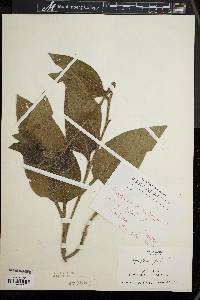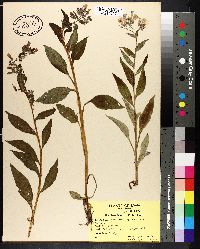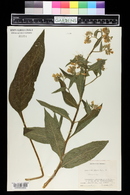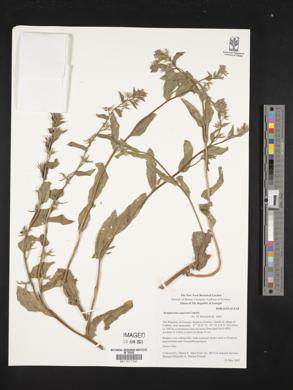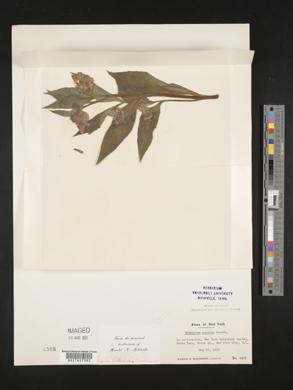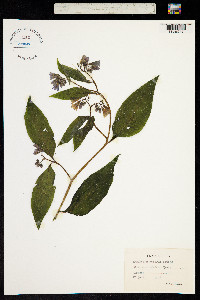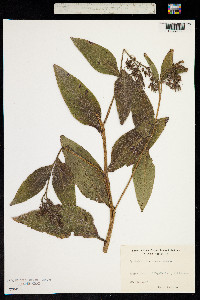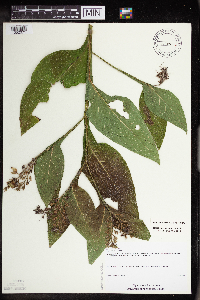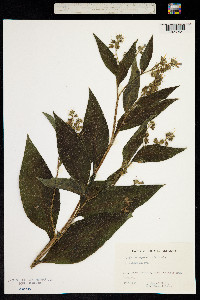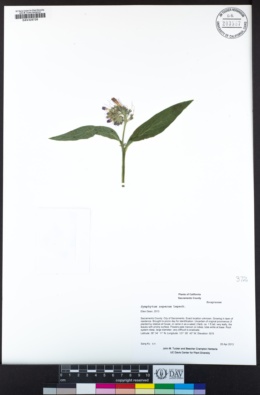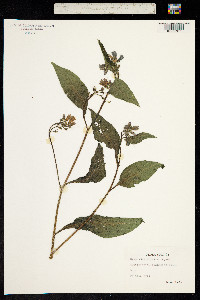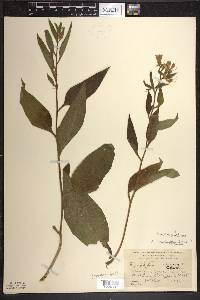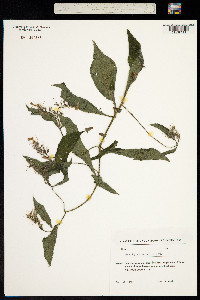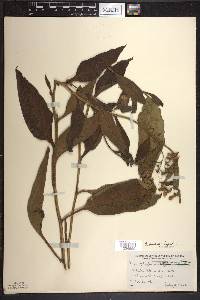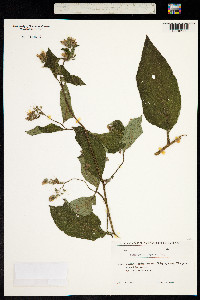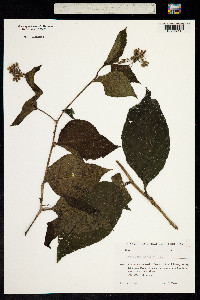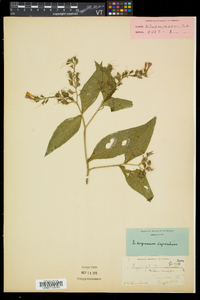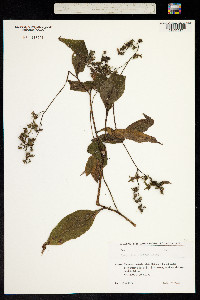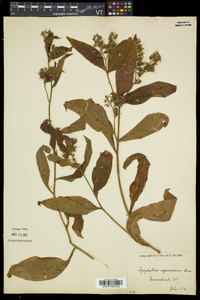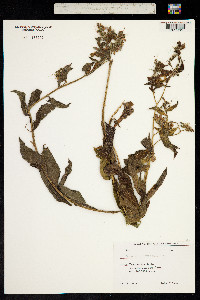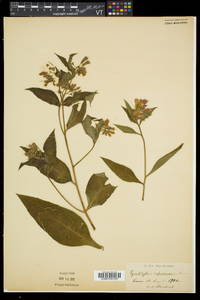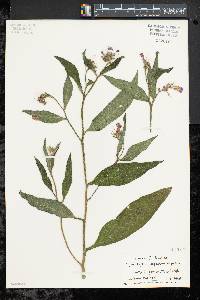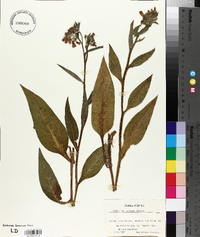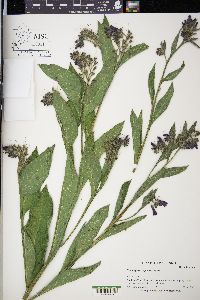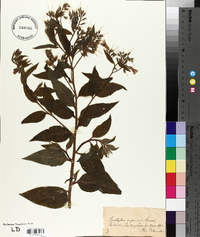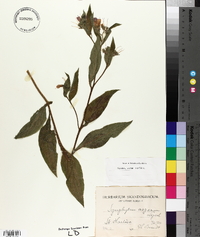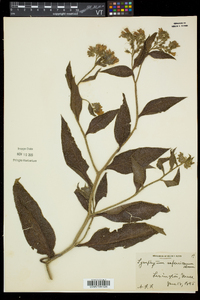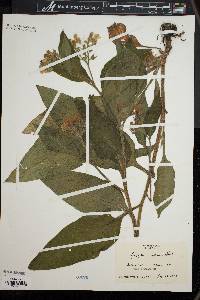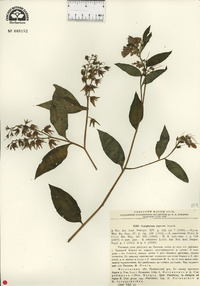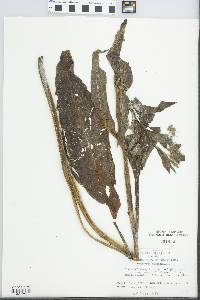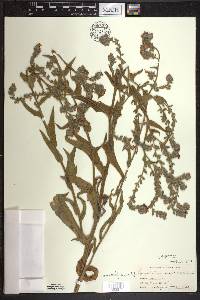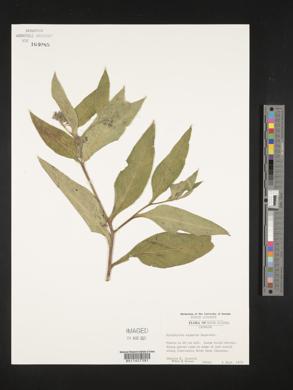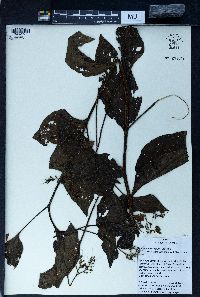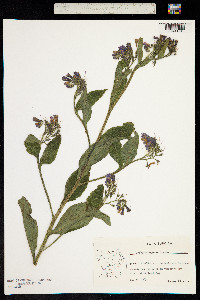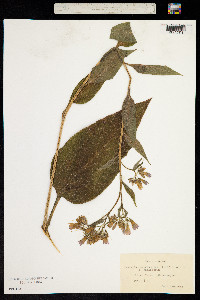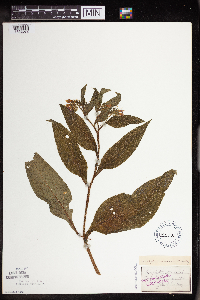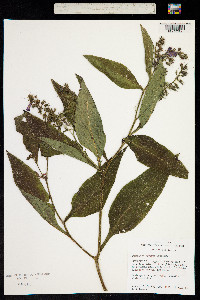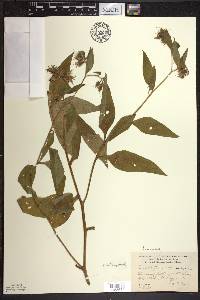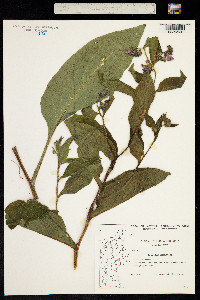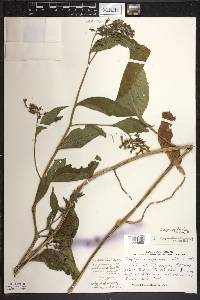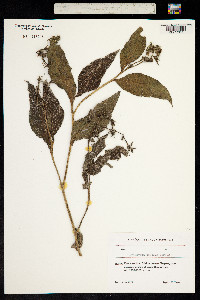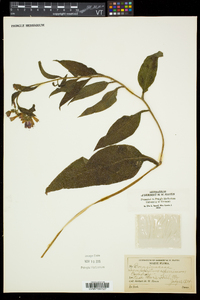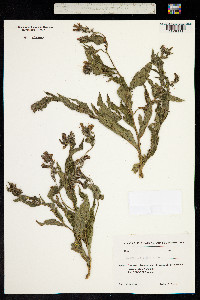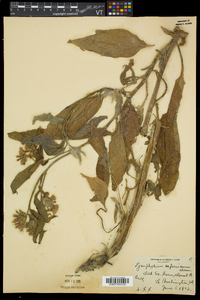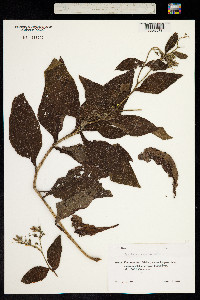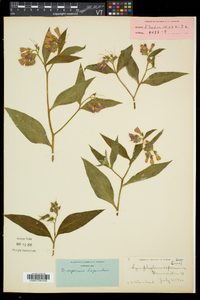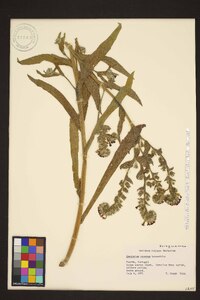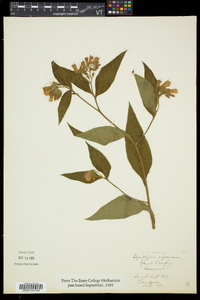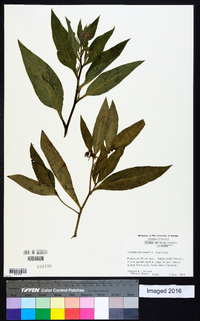Symphytum asperum
|
|
|
|
Family: Boraginaceae
Prickly Comfrey
[Symphytum echinatum Ledeb.] |
Perennial herb 30 cm - 1.5 m tall Stem: stout, branching, covered with very prickly, stout, flattened, recurved, and spiny hairs with broad bases similar to tiny rose thorns. Leaves: alternate, mostly stalkless (rarely with leaf tissue continuing down the stem), non-toothed, harshly prickly-hairy, large (over 6 cm long and wide), somewhat egg-shaped or lance-shaped, usually longer than wide. Inflorescence: of several to many, often paired, nodding, stout, short, prickly-spiny, modified spike-like branches near top of stem and often in upper leaf axils, with individual flowers stalked. Flowers: pink turning blue, 1 - 1.5 cm tall, radially symmetric, narrowly bell-shaped with long, cylindric petal tube, and very short, erect, tooth-like lobes. Sepals: bristly and prickly-hairy, five, but fused at base, then separating into 2.5 - 4 mm long, somewhat lance-shaped, obviously pointed lobes. After flowering the calyx elongates to 1 - 1.7 cm long in fruit. Petals: five, but fused into a long cylindric tube for most of their length, then separating into five, tooth-like lobes which are much shorter than the tube portion. Stamens: five, filaments narrower than anthers, very short, attached to top inside of petal tube, but anthers never extended beyond petal tube. Pistil: with one, four-lobed, two-chambered, superior ovary; and a single, slender, threadlike style with a single stigma. The style and stigma are just longer than the petal tube. Fruit: a cluster of four, rough, wrinkled, approximately 4 mm tall, somewhat egg-shaped, incurved nutlets with a lengthwise ridge on the inner side, and a prominent toothed basal rim surrounding a short, stalk-like, basal appendage. The basal stalk-like structure of each nutlet fits into a central pit of the otherwise flattish base of the remnant flower, thereby holding the nutlets at a slight upward angle with the tips pointing toward the center. Roots: branching, thickened, and secreting a sticky, bitter, gelatinous substance (mucilage). Similar species: Symphytum asperum is very similar to S. officinale, except that species has obviously winged stems created by leaf tissue continuing down onto the stem, the hairs of the stem and inflorescence lack spiny, broad-based hairs, and the nutlets are smooth and shiny. This species may be confused with Anchusa officinalis, however, that species has more narrow leaves, and deeper blue flowers that have narrower petal tubes with obvious, larger, separate, somewhat flaring, more round-tipped lobes. Flowering: June to August Habitat and ecology: Incredibly rare, a garden escape found only once in the Chicago Region. Occurence in the Chicago region: non-native Notes: A native to the Caucasus region of Europe, this species is sometimes planted as an ornamental, but very rarely persists if it escapes. This species can hybridize with Symphytum officinale. Author: The Field Museum Much like no. 1 [Symphytum officinale L.]; hairs of the stem and infl stouter, flattened, often recurved; lvs not decurrent, or only shortly (to 1 cm) and narrowly so; cor pink, turning blue; filaments narrower than the anthers; connective not projecting; nutlets roughened. Native of the Caucasus region, occasional in waste places across the n. part of our range, Que. to B.C. June-Aug. (S. asperrimum) S. tuberosum L., with a rhizome that is tuberous-thickened at intervals and with slender cauline hairs as in no. 1, but nondecurrent lvs as in no. 2, has been reported as adventive in N. Engl. Gleason, Henry A. & Cronquist, Arthur J. 1991. Manual of vascular plants of northeastern United States and adjacent Canada. lxxv + 910 pp. ©The New York Botanical Garden. All rights reserved. Used by permission. |

